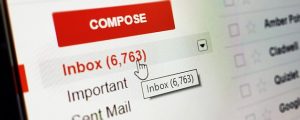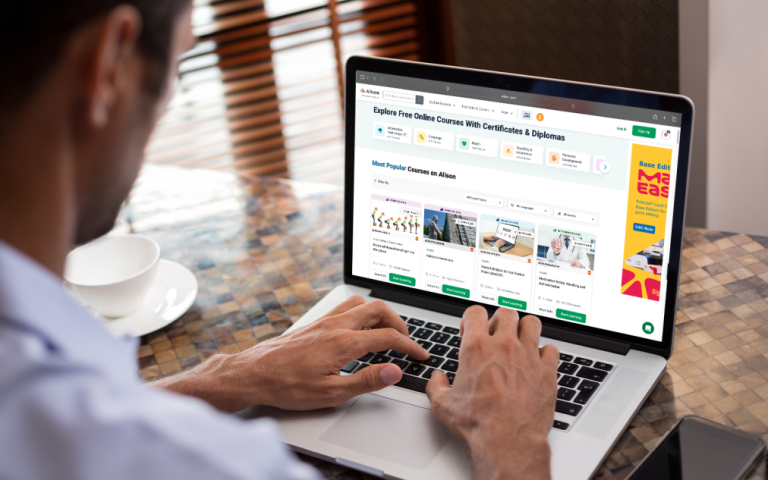Have you ever received an email from a colleague that made you want to hide on their behalf? Or worse, been the writer of such an email and spotted errors 10 seconds after pressing send? Well-written emails should be part of any professional’s toolkit and Alison has free online email etiquette courses to get you on track. Before you start learning, here are some tips and tricks to help you email like a boss.
What Is Email Etiquette and Why Does It Matter?
Email etiquette is a general code of conduct for sending emails. It includes basics like proper punctuation and being polite.
It matters because email, as a form of communication, forms the basis of all kinds of relationships. A well-presented email is often your first shot to make a good and lasting impression. Your emails should be:
- Professional – boosting your professional image and that of the company you represent.
- Efficient – they should be concise and direct.
Emails are useful for keeping track of conversations around any given subject, and provide written evidence of decisions. All the more reason to make yours polished!
Top Email Etiquette Tips
Email is a deservedly popular communication tool. According to Statista, an estimated 376.4 billion emails are expected to be sent every day this year! The top 5 countries by number of emails being sent daily are:
- USA 9.7 billion
- Germany 8.5 billion
- Ireland 8.4 billion
- Netherlands 8.3 billion
- UK 8.3 billion
- France 8.3 billion
Enhancing your communication skills can help strengthen relationships, engender authority, and support career success. Here are our top tips for composing professional emails:
Begin With The Subject
The subject of the email tells the reader what the email communication is about. Choose a clear and concise subject line that includes essential information. For instance, don’t make your subject line “Urgent – read this!” if what you mean is “Team meeting rearranged”. One is generic and annoying, the other tells the recipient that the contents are relevant to them.
Mind Your Tone
Professional emails to your clients and your boss should not resemble emails you would send to your friends. Maintain a professional tone. Additionally, send your emails from your work or professional email address. For example, don’t send the CEO an email about this quarter’s financial reports from your ‘[email protected]’ account if you want to be taken seriously.
Customise Your Emails
Sometimes, you need to send a bulk email to many recipients. Make them feel that the email is just for them by using the recipient’s name and mentioning something that is unique to them. For example, “Good morning, Jeff. Congratulations on obtaining your financial qualification…”. The personal touch is a nice touch.
Course Recommendation:
Email Marketing for Businesses – This course will guide you in crafting personalised, targeted emails that resonate with specific customer segments, driving higher engagement and conversion rates. You’ll learn how to leverage data and segmentation to tailor email content, subject lines, and calls to action, resulting in more effective and impactful email marketing campaigns.
Proofread
Check that your email is grammatically correct, has no spelling mistakes and uses correct punctuation before hitting “send”. Error-laden emails can be off-putting to the reader. Gmail and other email providers now offer AI-powered features that can help you compose emails more effectively.
Contain Your Emotions
As working professionals, we need to be mindful of not letting our feelings get the better of us. Adding emojis and exclamation points after each sentence will result in your email being perceived as unprofessional and it may not be taken seriously. Be friendly and cordial and give compliments where due, but don’t vent your frustrations or write anything you’ll regret later.
Course Recommendation:
Develop Your Emotional Intelligence – This course can significantly improve your professionalism in email communication by helping you understand and manage the emotions that may be influencing your tone and message. By developing your emotional intelligence, you’ll gain greater self-awareness, allowing you to identify and address any emotional triggers that might lead to unprofessional or impulsive email responses.
 Be confident
Be confident
“Confidence is key” is not just a saying. It translates well in email communication and gives the reader have confidence not just in your abilities, but in what you’re saying. Avoid using doubtful phrases like ‘think’ as this may undermine your expertise.
Course Recommendation:
Self-Confidence for the Corporate World – By focusing on building inner strength, developing effective communication, and refining personal branding, this course equips individuals with the tools and knowledge necessary to project confidence, build strong workplace relationships, and achieve their professional goals.
Be Concise
People are busy, and at times, attention spans may be short. This is especially true when a colleague or your supervisor must work through tens of emails daily. You don’t want to waste time writing the email or take up their time reading it. Be concise. Provide only necessary information and avoid flowery language that will lengthen the email but not add value to it.
Remember, “Proper email is a balance between politeness and succinctness”, Guy Kawasaki.
Additional Emailing Tips to Remember
- Be mindful of the ‘reply to all’ button. Does everyone need to see your reply to the email?
- Have a CTA (call to action) in the email. This is informing the reader of what you will do or what you would like them to do.
- Include a signature. This lets people know who they are communicating with and their designation. This can also include additional business information like links to the website and social media pages.
- Attachments and links. Check if you have included the mentioned attachments and added the links to the copy.
- Think before you ‘forward’ an email. Some communications may contain sensitive information that not everyone should be privy to.
- Take advantage of your email provider’s hacks. Gmail, Outlook and others have integrated multiple tools and functionalities to aid productivity and help you design your email to your specifications.
- Finally, proofread one more time before hitting “send”.
Remember that sending emails is a powerful way to channel information to your team, leader, clients, and your suppliers. Whether you are the sender or the recipient of the email, take note that emailing serves as an important communication tool and as thus, should be used well.
Enhance your communication skills by registering with Alison and beginning your free online email etiquette training today!
Frequently Asked Questions
Q: What is the single most important rule of email etiquette?
A: Always proofread your email before hitting send. Errors can undermine your professionalism and credibility.
Q: Should I always use formal language in work emails?
A: While a professional tone is generally recommended, the level of formality can vary depending on your company culture and the relationship you have with the recipient.
Q: How can I make my emails more concise?
A:
- – Get to the point quickly.
- – Use bullet points to break up long paragraphs.
- – Avoid unnecessary jargon and overly complex sentences.
- – Edit your emails before sending to remove any unnecessary words or phrases.
Q: What should I do if I accidentally send an email to the wrong person?
A: If you realise the error immediately, send a follow-up email to the intended recipient apologising for the mistake and requesting that they disregard the previous email.
Q: How can I use email effectively for collaboration?
A:
- Use clear subject lines.
- Keep the conversation focused and on topic.
- Summarise key decisions and action items in emails.
- Use the “reply all” function judiciously.
Q: Are there any specific email etiquette rules for international communication?
A: Yes, be mindful of cultural differences in communication styles. Research the cultural norms of the recipient before sending an email to someone in a different country.








